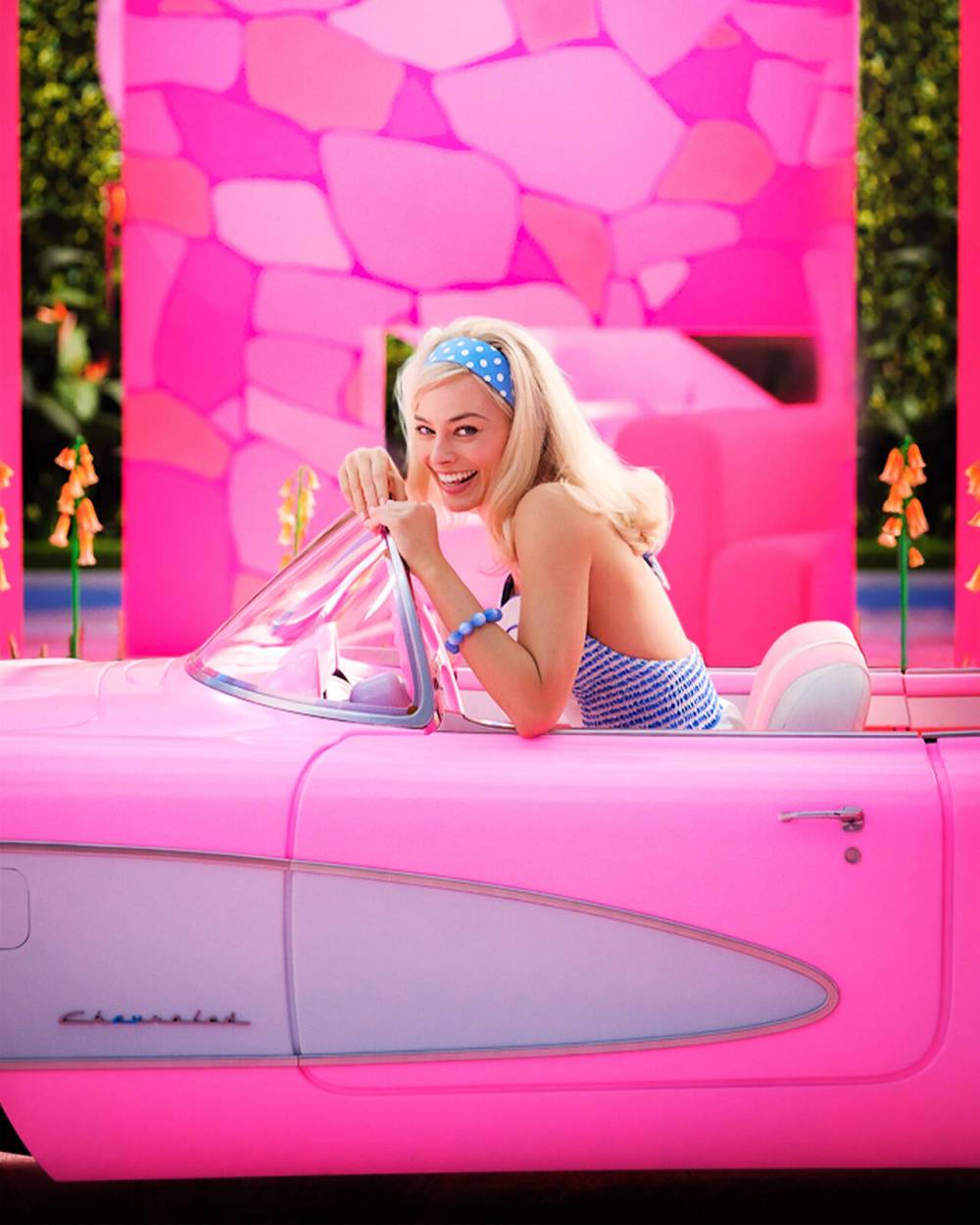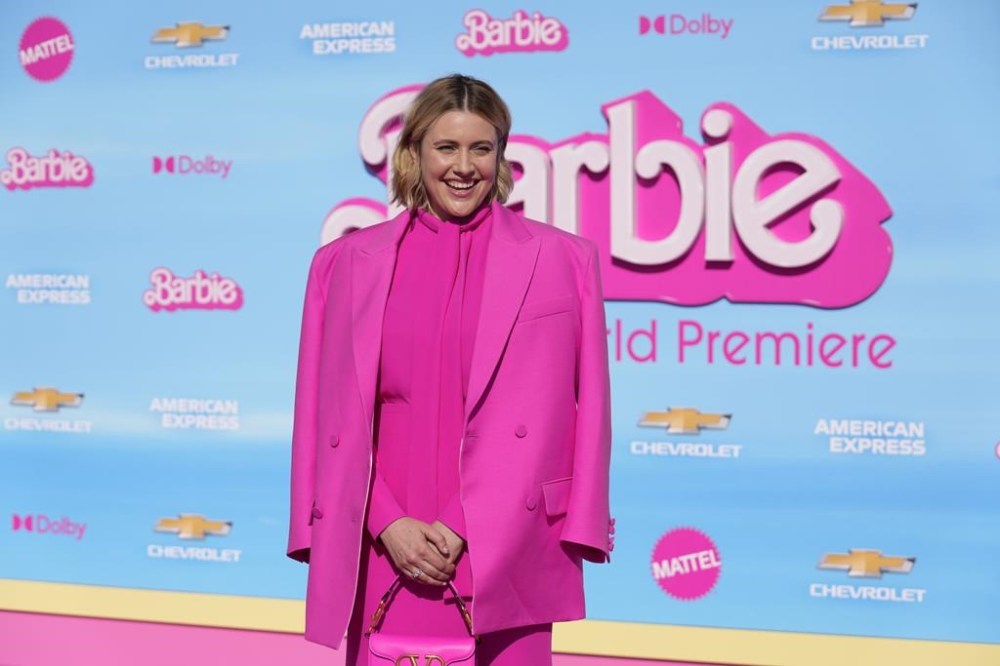Gerwig’s movie gives Barbie the makeover we all needed
Advertisement
Read this article for free:
or
Already have an account? Log in here »
To continue reading, please subscribe:
Monthly Digital Subscription
$1 per week for 24 weeks*
- Enjoy unlimited reading on winnipegfreepress.com
- Read the E-Edition, our digital replica newspaper
- Access News Break, our award-winning app
- Play interactive puzzles
*Billed as $4.00 plus GST every four weeks. After 24 weeks, price increases to the regular rate of $19.00 plus GST every four weeks. Offer available to new and qualified returning subscribers only. Cancel any time.
Monthly Digital Subscription
$4.75/week*
- Enjoy unlimited reading on winnipegfreepress.com
- Read the E-Edition, our digital replica newspaper
- Access News Break, our award-winning app
- Play interactive puzzles
*Billed as $19 plus GST every four weeks. Cancel any time.
To continue reading, please subscribe:
Add Winnipeg Free Press access to your Brandon Sun subscription for only
$1 for the first 4 weeks*
*$1 will be added to your next bill. After your 4 weeks access is complete your rate will increase by $0.00 a X percent off the regular rate.
Read unlimited articles for free today:
or
Already have an account? Log in here »
Hey there, time traveller!
This article was published 29/07/2023 (799 days ago), so information in it may no longer be current.
In 1992, Mattel released the Barbie to rule all Barbies: Totally Hair Barbie.
She wore an off-the-shoulder Pucci-inspired mini dress in electric hues of lime, aqua and magenta. She had teeny-tiny pink heels to match. But the hair. Oh, the hair. Down to her ankles — unheard of at the time — and crimped, with a big, teased bang. She is the bestselling Barbie of all time.
I believe it. I was seven in 1992 and I had two.

Warner Bros. Pictures
Barbie is portrayed by Margot Robbie.
I was a Barbie-obsessed kid. I had dozens of them. The 1990 Holiday Barbie in her voluminous fuchsia gown. The Ice Capades Barbie, from the same year, with the pink, blue and purple skirt and the strappy iridescent top. I had two Sun Sensation Barbies in their gold bikinis; Sun Sensation Ken, with his electric-green board shorts and gold mesh crop top (!), was my only Ken. Every birthday and Christmas, a new magenta box containing a new perfect plastic woman to play with.
But Totally Hair Barbie was a revelation. Because for me, Barbie was always about the hair. The long, blond, cascading princess hair. Hair that was basically the opposite of my own curly brown hair.
Mattel did make a brunette Totally Hair (#representation), but I only ever wanted to play with the blond one. I didn’t just love Barbie’s hair. I actively coveted it. In Grade 1 or 2, I went through a period in which I would draw myself with blond hair in any self-portrait, a yellow Mr. Sketch marker granting me the Totally Hair of my dreams.
It wasn’t long before my relationship with Barbie began to curdle. I was decidedly not blond and a body type best described as “sturdy.” Compared to long, lithe Barbie and her golden halo of hair, I felt ugly. The thing I loved the most was starting to make me feel bad about myself, which is a confusing and heartbreaking sensation.
Eventually, the Barbies went into a box and I became a staunchly anti-Barbie teenager. I understood that Barbie upheld beauty standards as narrow as her waist, that she enforced the idea that the ideal woman is thin, blonde and white, and that women could be a doctor, vet, pilot, chef, Rockette, news anchor, teacher, dolphin trainer or any other of Barbie’s 200 jobs as long as they looked a specific way.
To my mind, Barbie was bad for women.
So, I identified with the scene in Greta Gerwig’s Barbie in which Margot Robbie’s Stereotypical Barbie — “the Barbie you think of when you think of a Barbie” and the Barbie I absolutely would have picked out of the toy box every time — is in the Real World, and a group of tweens are letting her have it, telling her she’s the perfect plastic embodiment of “unattainable physical standards and the glorification of rampant consumerism.”
Barbie is confused; didn’t she make things better for women? In Barbie Land, after all, it’s the women who hold power, who are comfortable, who are safe.
The tween girls’ reaction to meeting Barbie IRL hits the crux of it: Barbie’s complicated, man. She’s an avatar for ideal, impossible feminine beauty and she has a feminist origin story — she is, by design, a home-owning, career-focused woman who never married or became a mother, an antidote to all the baby dolls that didn’t allow little girls to imagine a womanhood beyond motherhood.
She’s everything, as the movie’s tagline goes, including flawed.

I knew Gerwig’s film — surrealist, feminist, weird, funny, sad — would be good. I did not expect it to be a healing journey with a doll I loved and then loathed and have slowly started to love again.
Barbie isn’t just a doll, or a brand. She’s an idea. And when we played with Barbies, we were the ones who animated them. We created worlds for them, we told stories with them, and we expressed our own ideas with them.
Sometimes we even got creative with them; Kate McKinnon’s Weird Barbie is a love letter to anyone who has ever given their Barbie a makeover.
It’s in that spirit that Gerwig created her own Barbie Land. In her hands, she uses Barbies to communicate big ideas about patriarchy, objectification, womanhood and growing up. To flip the script and have the Kens be the ones portrayed as one-dimensional, decorative accessories. To hit on the particular heartbreaks of growing up as a girl, of learning how the real world works, and how impossible it is to be a woman (or even a representation of a woman) because to be a woman is to somehow always be wrong. “Things can be both/and. I’m doing the thing and subverting the thing,” as Gerwig herself said.
I don’t long for Barbie’s blond hair anymore — I had blond highlights for a month in 2017 which, incidentally, is a fun time to get your 10-year passport photos done — though I did wonder, briefly, what it would be like to have Robbie’s Barbie hair.
As it turns out, even noted beautiful actress Margot Robbie doesn’t have that hair. It took 18 wigs and 30 hairpieces to transform her into Barbie.
jen.zoratti@winnipegfreepress.com

Jen Zoratti is a columnist and feature writer working in the Arts & Life department, as well as the author of the weekly newsletter NEXT. A National Newspaper Award finalist for arts and entertainment writing, Jen is a graduate of the Creative Communications program at RRC Polytech and was a music writer before joining the Free Press in 2013. Read more about Jen.
Every piece of reporting Jen produces is reviewed by an editing team before it is posted online or published in print – part of the Free Press‘s tradition, since 1872, of producing reliable independent journalism. Read more about Free Press’s history and mandate, and learn how our newsroom operates.
Our newsroom depends on a growing audience of readers to power our journalism. If you are not a paid reader, please consider becoming a subscriber.
Our newsroom depends on its audience of readers to power our journalism. Thank you for your support.
History
Updated on Saturday, July 29, 2023 9:15 AM CDT: Adds art

